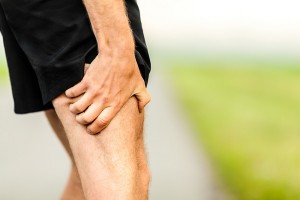Sudden sharp pain, popping, tearing and tenderness — these are the general symptoms associated with hamstring strains. This injury can be sidelining and chronic if you do not take the appropriate precautions or steps towards rehabilitation. While most hamstring strains occur on the field or court during a soccer, football, or basketball game, they are also known to affect dancers and runners as well.
The hamstring muscles make up a group of three muscles that run up the back of your thigh to your hip bone. These strong muscles are responsible for your ability to stretch your leg directly behind your body and when bending your knee. Injury may result during physical activity if one or all of these muscles reaches its breaking point.
Treating Hamstring Strains – A Standard Approach
While most hamstring strains can be treated with home remedies by using the RICE method (Rest, Ice, Compression and Elevation), some serious injuries may require more care. If pain does not fade after following the RICE method, it might be necessary to visit a qualified physician. After a general exam and possible X-rays and MRIs, the physician will diagnose a hamstring strain. Oftentimes, the physician will suggest possible treatments including:
- Rest: Taking a break from physical or strenuous activity will give your muscles the chance they need to reduce swelling, inflammation and stress.
Support: Using crutches or a cane will help take the pressure off of the injured leg in order to advance the healing progress. - Ice: Just like the RICE method, applying ice 2-3 times a day for 10-20 minutes will help reduce the swelling in your muscles.

- Pressure: Wearing compression shorts or an ace bandage will help minimize swelling in this area.
- Elevation: Continue to rest your muscles, but do so in an elevated position. Extending your leg above your heart will give your muscles improved circulation and decreased swelling.
- Pain Medication: Taking over-the-counter pain medicine like ibuprofen or acetaminophen will help with the pain and inflammation.
- Physical Therapy: Working with a physical therapist will help strengthen and increase flexibility to your injured leg.
- Surgery: While this option is the most extreme, surgery may become an option after a severe hamstring tear has occurred and the above treatments have failed.
Preventing a Hamstring Tear
In order to stay pain and injury-free, there are some prevention methods available. Always stretch before completing any type of physical activity. Warming up your muscles reduces the chance of tearing and helps your body complete strenuous activities. Strengthening your hamstring muscles with different exercises will reduce your chances of sustaining a hamstring strain or tear as well. Lastly, try to complete regular conditioning before engaging in your sport. Competing in your sport as a way of conditioning is not the best option when it comes to injury prevention.
Hamstring strains or tears can be debilitating for athletes and those working to stay physically active. Always stretch before working out and remember to add strengthening exercises to your agenda. If you find yourself plagued with hamstring pain or even a strain, try using the RICE method to see if it helps. Contact a physician if you are experiencing chronic hamstring pain to reduce the risk of further damage.

Recent Comments